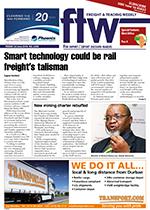In its recent report titled ‘Strengthening Africa’s Gateways to Trade’, Pricewaterhouse Coopers examined what it takes to become a successful hub port – and devised a hub-port scoring system.
Durban, for example, is by far Africa’s best port, boasting a hub-port score of 94, mainly because the lack of hinterland networks drives DRC traffic all the way down to Africa’s south-eastern tip. Interestingly, Abidjan’s score is 46 and Tema’s 40, but that lead is expected to shrink when Ghana’s expansion kicks in.
Unfortunately Nigeria, despite having the strongest economy in the Gulf of Guinea, is the only West African country that is “not following the trend towards establishing strong hub ports whereby large vessels dock in one spot and goods are transhipped to smaller ports”.
Shaw said it was because Tin Can Island, the port in Apapa that serves the Nigerian economic heartland of Lagos, was simply not overcoming issues such as “chaotic congestion”.
Ultimately shippers are increasingly favouring volume-driven, single-stop capacity offered by ports like Tema and Abidjan over the old-fashioned “milk run” that used to see cargo liners make their way up or down Africa’s coastline from port to port.
CAPTION
The map above, compiled by PriceWaterhouse Coopers, provides a quick-reference guide to design capacity and volume throughput at ports in sub-Saharan Africa, with a hub attractiveness score. While Tema and Abidjan have an over-supply of capacity, the same can’t be said of Lagos.


